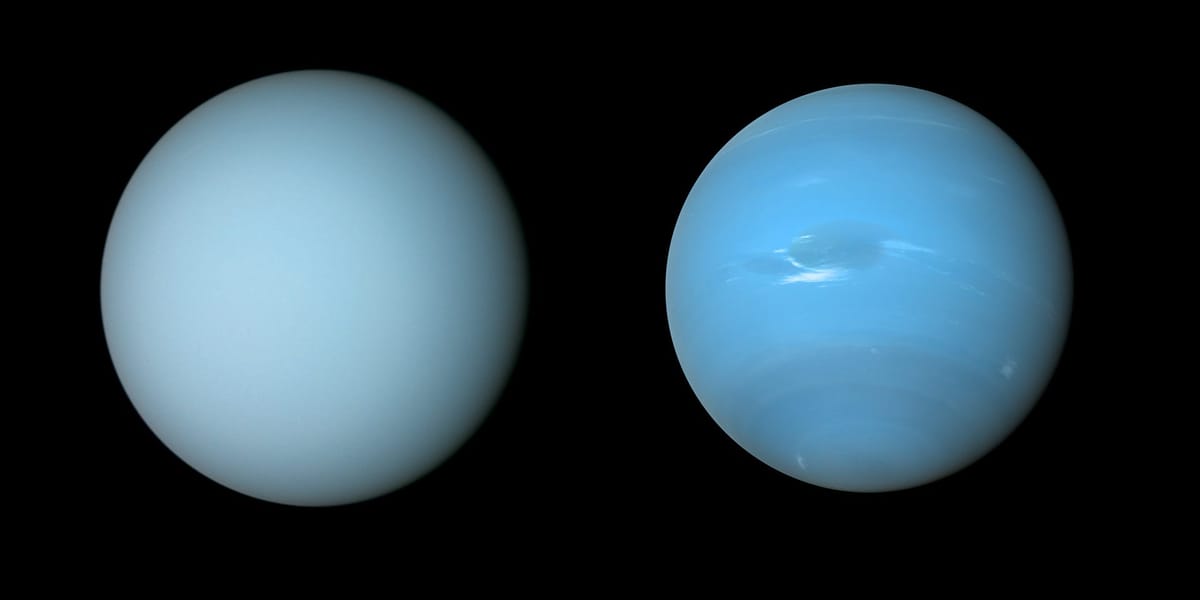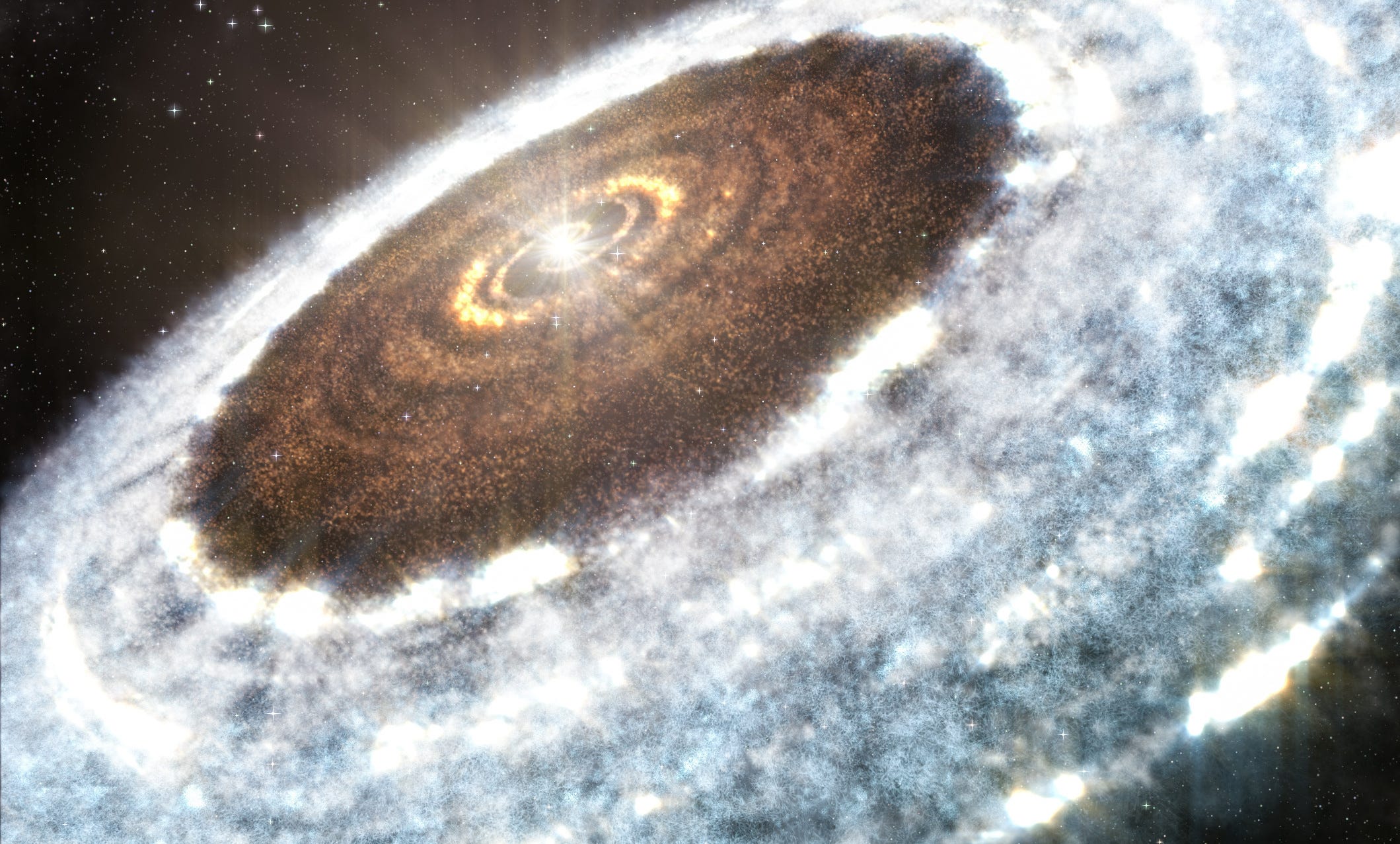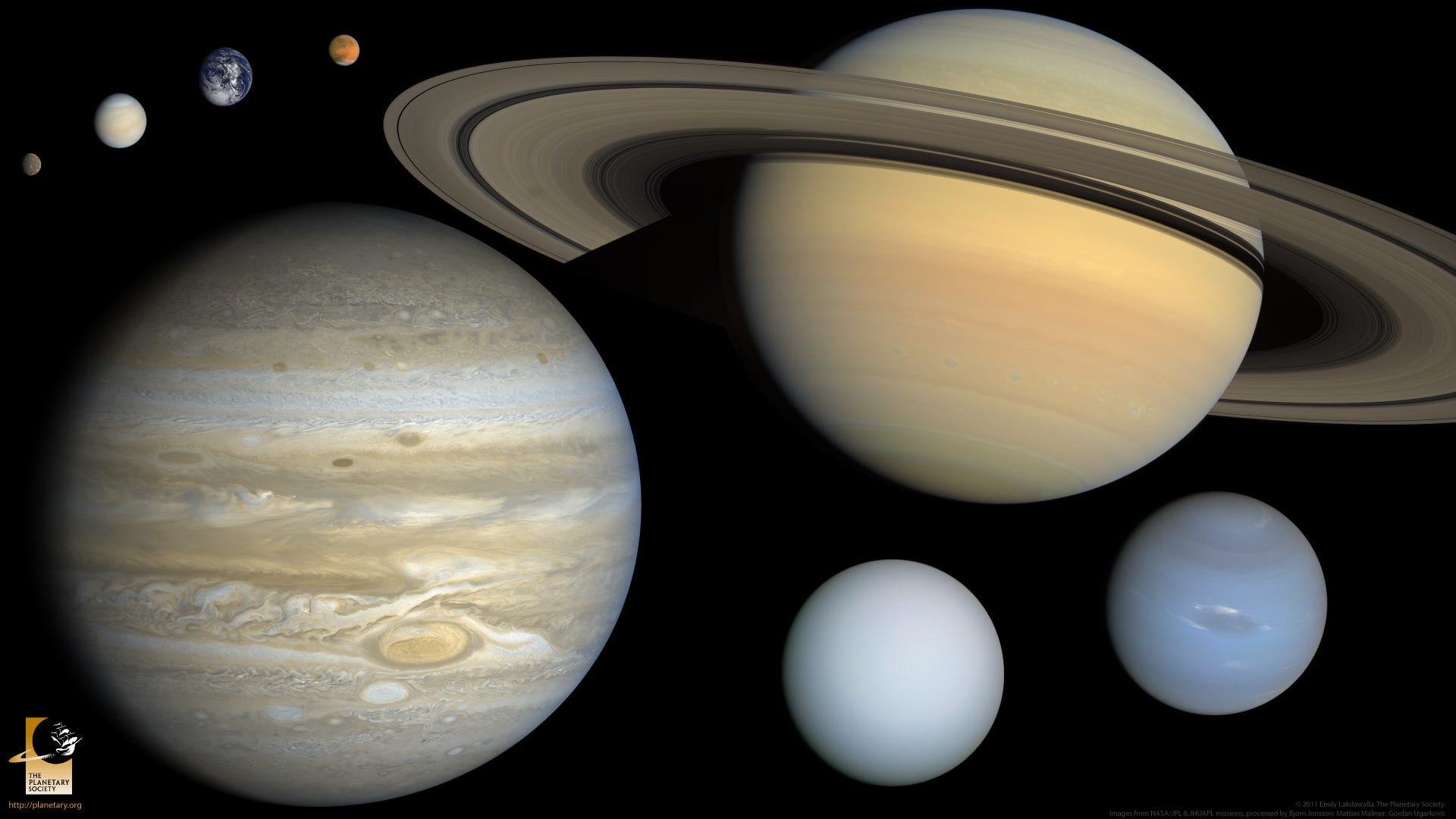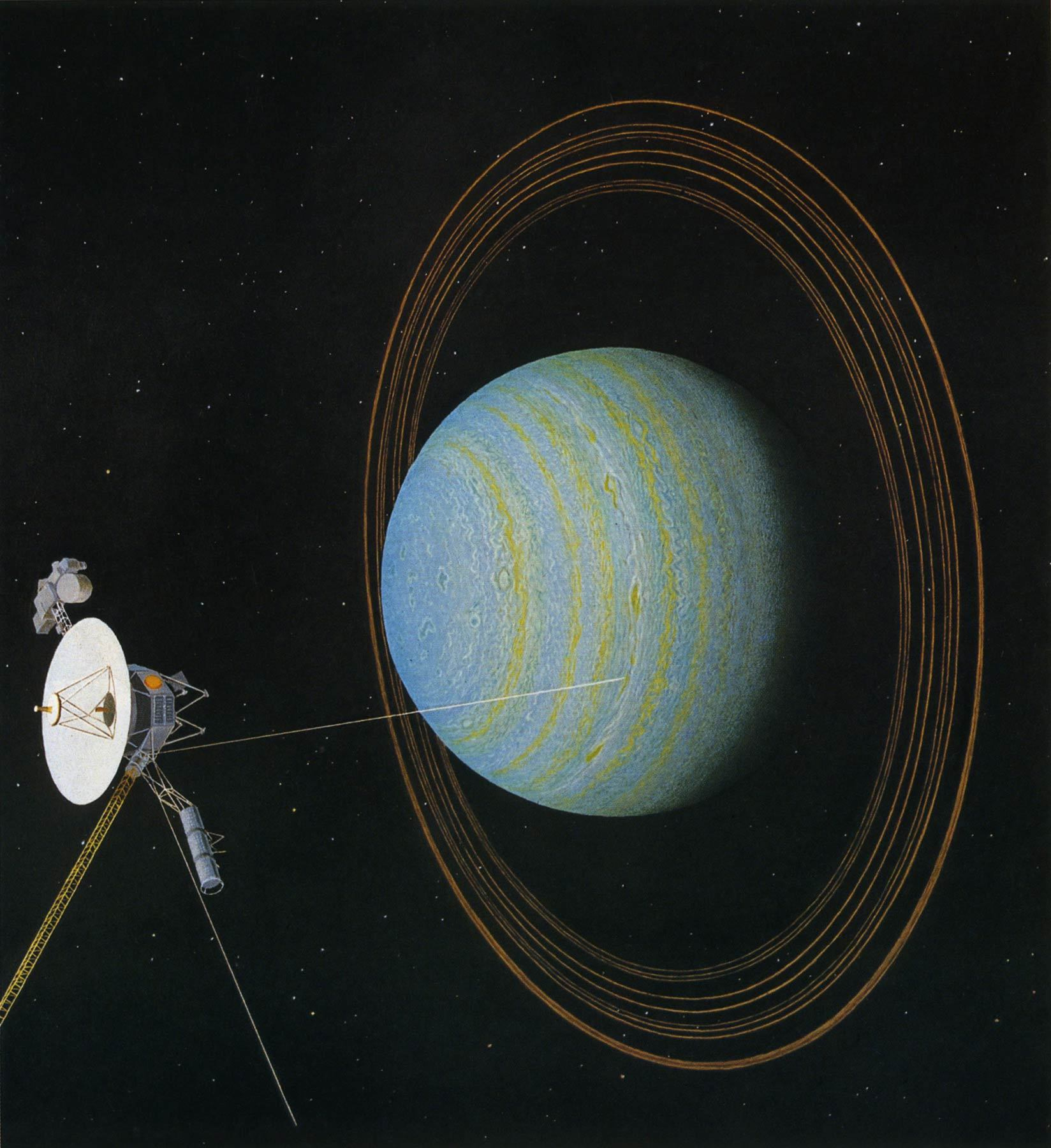How Uranus and Neptune are key to unlocking how planets form
A flagship mission to the ice giants will forever change our understanding of the origin and evolution of our solar system, and those beyond.

In the recent, most important U.S. planetary science report of the decade, scientists have endorsed that NASA undertake a flagship mission to Uranus, the least-explored planet of our solar system alongside its cousin Neptune. And for good reason: understanding how and where they formed has direct implications for the evolution of our own planet.
Earth formed about 4.6 billion years ago as a result of a violent process where thousands of baby planets over 100 kilometers in size collided with each other and accreted over a few million years. Scientists think early Earth would’ve lost most of its water to space due to the high heat from this process. Our water instead likely came during a brief period roughly 4 billion years ago when the grand migration of the giant planets of our solar system—Jupiter, Saturn, Uranus and Neptune—scattered large asteroids and comets all over. Many of these bombarded Earth, depositing water and organic materials—essential ingredients for life as we know it.
Yet beyond the existence of such a critical period, which is also debated, we don’t know exactly how the giant planets formed, where so, how they migrated and where from.
The formation conundrum
Jupiter & Saturn and Uranus & Neptune represent two different classes of planets. While each of their cores were forged from rapidly accreting rock-metal baby planets in the outer disk of material surrounding the Sun, their outer layers accumulated differently.
Since Jupiter and Saturn were the first and most massive planets to form, they gobbled up the majority of the outer solar disk’s hydrogen and helium to form their mantles and outer atmospheres. This left the still-growing mantles of Uranus and Neptune with more fractions of ices like water and ammonia, and only a relatively thin hydrogen and helium atmosphere. This is why scientists call Jupiter & Saturn gas giants and Uranus & Neptune as ice giants.

But here’s the conundrum: there simply wasn’t enough material in the solar disk for Uranus and Neptune to form where they currently orbit, 19 and 30 times farther from the Sun than Earth respectively. Scientists think they must have formed closer to the Sun where the disk was thicker, and then migrated to their current locations. But had the ice giants formed too close to the Sun, they wouldn’t be rich in water and ammonia. So how and where did Uranus and Neptune form?
The need to dive inside the ice giants
Figuring out the origin of ice giants isn’t just key to understanding our own solar system but countless others across the galaxy. Even though planets around other stars are incredibly far away, astronomers can use certain techniques to infer their masses and sizes, and thus their densities, to tell a gas giant apart from an icy one. In the thousands of exoplanets discovered to date, Uranus- and Neptune-scale worlds are the most common, followed by the gas giants. The giant planets in our backyard are thus key to understanding planetary formation across the Universe.

Clues to the origin and evolution of giant planets lie in the specific elements that make up their atmospheres, ones other than the hydrogen they amply inherited from the Sun’s disk. For example, noble gases like helium undergo very few chemical reactions inside giant planets so measuring their abundance compared to other gases will tell scientists how and where each planet acquired its heavy elements over time.
The trouble is that other than the direct gas measurements from inside Jupiter’s atmosphere by NASA’s Galileo probe in 1995, we lack such information on Saturn, Uranus and Neptune. This is particularly pressing for the ice giants because their noble gases are the most unaltered reflections of the planet-forming materials in the early outer solar disk. And yet Neptune and Uranus are the least-explored planets of our solar system, only flown past once by NASA’s Voyager 2 spacecraft in the last century, which also flew by Jupiter and Saturn.
Sending spacecraft to Jupiter and Saturn again has already proved to be world-changing—literally. The most recent gravity data from NASA’s Juno spacecraft, which entered Jovian orbit in 2016, provided evidence that Jupiter doesn’t have a distinct rock-metal core. Jupiter’s core is larger and fuzzier than expected, likely caused by the intense gas pressures in its mantle dissolving the core into an exotic substance called metallic hydrogen, or due to Jupiter absorbing a planet with 10 Earth masses during its formation. Data from NASA’s Cassini mission suggests Saturn has a fuzzy core too, spanning 60% of the planet’s diameter. These discoveries have led scientists to think that Uranus and Neptune might also have large diluted cores. The only way to know is to send a mission to the ice giants.
Upcoming exploration of Uranus and Neptune
The 2023-2032 Planetary Science Decadal Survey, a report produced every 10 years by the U.S. scientific community to guide future NASA missions, recommends sending a spacecraft to Uranus as the highest priority. If commissioned, the Uranus Orbiter and Probe (UOP) mission will measure the planet’s complex and unique magnetic field, map gravity variations and note the nature of its atmospheric wobbles to determine if the planet really sports a fuzzy core and what it is made of. A probe would enter Uranus’ atmosphere and precisely measure gases and their relative abundance.
The UOP mission will thus paint us a clear picture of where and how Uranus and Neptune formed, and how they subsequently evolved. This will also provide us with missing information necessary to understand the migration of the gas giants and the connected evolution of our solar system and early Earth.
In the best case scenario, UOP can launch on a SpaceX Falcon Heavy rocket in 2031 or 2032 and reach Uranus 12 to 13 years later. There’s strong international interest in the mission too. The 2021 report of ESA’s Voyage 2050 Senior Committee recommends that the agency contribute to an ice giant mission led by an international partner, similar to how ESA provided the Huygens landing probe to Saturn’s moon Titan as part of Cassini.
ESA is also considering a Uranus orbiter mission. China is considering a Voyager-like mission to interstellar space that would launch in 2024 and fly past Neptune in 2038. The spacecraft would include an atmospheric probe. In the meanwhile, observing Jupiters and Neptunes in different star systems lets us witness snapshots of planets forming, migrating and evolving. The next generation of telescopes, like the Nancy Grace Roman Space Telescope, will advance such studies by letting us observe ice giant worlds in various stages of formation.
The ice giants in our backyard are essential to understanding how planets form and evolve. It’s high time we give them a proper visit.

Originally published at The Planetary Society.
→ Browse the Blog | About | Donate ♡
